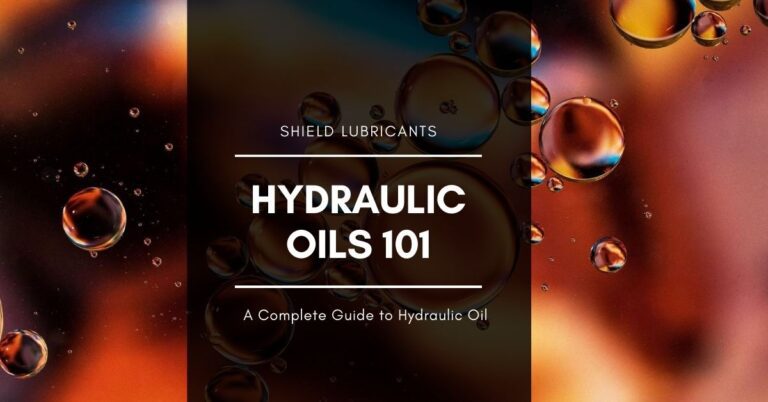Can You Mix Hydraulic Fluid
The question of whether or not it is possible to mix hydraulic fluid is one that has garnered significant attention in the field of engineering. Hydraulic systems are utilized in a wide range of applications, from heavy machinery and construction equipment to aircraft and automobiles. The importance of maintaining proper hydraulic fluid composition cannot be understated, as it directly impacts the performance and longevity of these systems. This article aims to address this pressing issue by exploring different types of hydraulic fluids, potential issues associated with mixing them, and the consequences that may arise from such actions. Additionally, expert recommendations and resources will be provided to guide individuals towards appropriate maintenance and servicing practices. By delving into the technicalities surrounding hydraulic fluids and their implications on system functionality, this article seeks to equip readers with a comprehensive understanding of mixing hydraulic fluids and its potential ramifications.
Different Types of Hydraulic Fluids
Various types of hydraulic fluids are available in the market, each with their own unique properties and characteristics. One important characteristic to consider is viscosity, which refers to the fluid’s resistance to flow. Different viscosity grades are available for different applications, ranging from low to high viscosity. The choice of viscosity grade depends on factors such as temperature, operating conditions, and equipment requirements.
In addition to viscosity, compatibility issues should also be considered when selecting hydraulic fluids. Compatibility refers to the ability of different fluids to mix without causing adverse effects such as reduced performance or damage to system components. Mixing incompatible fluids can lead to problems such as seal degradation, increased wear and tear on components, and reduced overall efficiency.
It is crucial for operators and maintenance personnel to carefully evaluate the specifications provided by manufacturers when choosing a hydraulic fluid. Understanding the specific requirements of the equipment being used is essential in order to select a fluid that will provide optimal performance and avoid potential issues.
With an understanding of the different types of hydraulic fluids available and their respective properties, it becomes clear that mixing hydraulic fluids can present potential issues. These issues will be discussed further in the subsequent section on ‘potential issues with mixing hydraulic fluids’.
Potential Issues with Mixing Hydraulic Fluids
There are potential challenges associated with combining different types of hydraulic fluids, akin to navigating a complex maze where the paths may not align seamlessly. Hydraulic fluid compatibility is a critical aspect that needs careful consideration when mixing fluids. Incompatibility between different types can lead to various issues, including compromised performance and damage to system components.
One major concern is the effect of temperature on hydraulic fluid performance. Different fluids have varying temperature ranges within which they operate optimally. Mixing incompatible fluids can result in decreased viscosity and reduced lubrication properties at high temperatures, leading to increased friction and wear on system components. Conversely, at low temperatures, some mixtures may become too viscous, impeding smooth flow and causing inadequate lubrication.
To emphasize the potential consequences of mixing incompatible hydraulic fluids, consider the following table:
| Fluid A | Fluid B | Result |
|---|---|---|
| Type X | Type Y | Performance |
| Type Z | Type X | Degradation |
| Type Y | Type Z | Component Wear |
These examples illustrate how improper mixing can impact fluid performance and ultimately cause damage to system components.
In conclusion, understanding hydraulic fluid compatibility is crucial for maintaining optimal system operation. Mixing incompatible fluids can lead to detrimental effects on performance due to temperature-related issues. The subsequent section will explore the damaging consequences that such mixtures can have on hydraulic system components.
Damage to Hydraulic System Components
One notable consequence of incompatible hydraulic fluid mixtures is the potential damage they can cause to various components within the hydraulic system. Damage prevention should be a top priority for any operator or maintenance personnel working with hydraulic systems. Ensuring fluid compatibility is crucial in order to maintain the integrity and functionality of these components.
When incompatible fluids are mixed, the resulting mixture can have adverse effects on different parts of the hydraulic system. For example, certain combinations may lead to seal degradation, which can result in leaks and loss of system efficiency. In addition, mixing fluids with different viscosities can affect the performance of valves and actuators, leading to reduced control accuracy and responsiveness.
Moreover, improper mixing may cause deposits or sludge formation within the system, which can obstruct flow passages and impede proper functioning. This can further contribute to increased wear on vital components such as pumps and motors.
To prevent such damage, it is essential to follow manufacturer recommendations regarding fluid compatibility when servicing or replacing hydraulic fluids. Regular inspections and analysis of fluid samples can also help identify potential issues before they escalate into significant damage.
Transitioning into the subsequent section about contamination risks: In addition to damage caused by incompatible fluid mixtures, contamination risks pose another significant concern for hydraulic systems.
Contamination Risks
Contamination poses a significant risk to the functionality and reliability of hydraulic systems, as foreign particles can infiltrate critical components and hinder their performance. One important factor to consider in preventing contamination is hydraulic fluid compatibility. Mixing different types or brands of hydraulic fluids can result in chemical reactions that degrade the fluid’s properties, leading to reduced lubrication capabilities and increased wear on system components. Additionally, incompatible fluids may cause seal swelling or shrinkage, resulting in leaks and compromised system integrity.
Proper fluid disposal is another crucial aspect to consider when addressing contamination risks. Hydraulic fluids should be disposed of following industry regulations and guidelines to prevent environmental pollution. This involves avoiding indiscriminate dumping or pouring used fluids into drains or soil. Instead, these fluids should be collected and disposed of through authorized channels such as recycling facilities or designated waste management services.
Incorporating maintenance and servicing best practices is essential for minimizing contamination risks in hydraulic systems. Regularly scheduled inspections, filter replacements, and thorough cleaning procedures help remove contaminants from the system before they can cause damage. Adhering to manufacturer recommendations for fluid selection and replacement intervals also plays a vital role in maintaining optimal system performance.
Transition: With an understanding of contamination risks addressed, it is equally important to explore maintenance and servicing best practices that ensure the longevity and efficiency of hydraulic systems.
Maintenance and Servicing Best Practices
To ensure the longevity and efficiency of hydraulic systems, implementing appropriate maintenance and servicing practices is crucial. One important aspect of maintenance is ensuring fluid compatibility in hydraulic systems. Different types of hydraulic fluids have varying chemical compositions, which can affect their performance and compatibility with system components. It is essential to use a fluid that is compatible with the specific system requirements to prevent any adverse effects.
Fluid analysis is an integral part of a comprehensive maintenance program for hydraulic systems. Regularly monitoring and analyzing the condition of hydraulic fluids can provide valuable insights into potential issues or contamination risks. Fluid analysis involves examining various parameters such as viscosity, water content, oxidation levels, and particle count. By tracking these indicators, technicians can detect any abnormalities or signs of degradation in the fluid.
Fluid analysis allows for proactive decision-making regarding necessary maintenance actions. If any deviations from acceptable parameters are detected through fluid analysis, appropriate corrective measures can be taken promptly to prevent further damage or component failure.
Understanding the importance of fluid compatibility and conducting regular fluid analysis enables effective maintenance practices, minimizing the risk of contamination and optimizing system performance. This ensures smooth operation and longevity while preventing costly repairs or replacements down the line.
Moving forward to discuss the consequences of mixing hydraulic fluids…
Consequences of Mixing Hydraulic Fluids
Mixing hydraulic fluids can have serious consequences, including system failure and costly repairs. When different types of hydraulic fluids are mixed, they can undergo chemical reactions that result in the formation of sludge or varnish-like deposits. These deposits can clog valves, filters, and other components, leading to reduced system efficiency and ultimately system failure. Additionally, mixing incompatible hydraulic fluids may create potential safety hazards such as leaks, explosions, or fires due to increased fluid viscosity or reduced lubricity. Therefore, it is crucial to strictly adhere to manufacturer recommendations and avoid mixing different types of hydraulic fluids to prevent these detrimental outcomes.
System Failure and Costly Repairs
System failure and costly repairs can result from the improper combination of different hydraulic fluids. When incompatible fluids are mixed, they may cause a chemical reaction that leads to the formation of sludge or varnish-like deposits within the hydraulic system. These deposits can clog valves, restrict fluid flow, and impair the overall performance of the system. Consequently, the system may experience reduced efficiency, increased wear and tear on components, and eventual failure. Repairing such damage can be expensive as it often involves replacing contaminated parts, flushing and cleaning the entire system, and replenishing it with suitable hydraulic fluid. Additionally, downtime for repairs can result in lost productivity and revenue. Thus, it is crucial to adhere strictly to manufacturer recommendations regarding fluid compatibility to prevent system failure and avoid costly repairs.
Transitioning into the subsequent section about potential safety hazards: Understanding these consequences is important not only for avoiding expensive repairs but also for preventing potential safety hazards that could arise from mixing hydraulic fluids incorrectly.
Potential Safety Hazards
The improper combination of different hydraulic fluids can lead to potential safety hazards. It is essential to follow safety precautions and proper handling procedures when working with hydraulic fluids to prevent accidents and ensure the integrity of the system. Here are some key points to consider:
- Always consult the manufacturer’s recommendations for compatible hydraulic fluids.
- Avoid mixing different types or brands of hydraulic fluids unless explicitly stated as compatible.
- Thoroughly clean all equipment, including containers and hoses, before adding a new fluid.
- Use dedicated equipment for each type of fluid to avoid cross-contamination.
- Regularly inspect hydraulic systems for leaks or signs of degradation.
By adhering to these safety precautions and proper handling techniques, the risk of safety hazards associated with mixing hydraulic fluids can be significantly reduced. Expert recommendations and resources provide further guidance on best practices for maintaining hydraulic systems without compromising safety or performance.
Expert Recommendations and Resources
One possible resource for obtaining expert recommendations on mixing hydraulic fluid is to consult industry-specific publications or technical manuals. These sources often provide detailed information on the proper techniques and procedures for mixing hydraulic fluid. By following these expert opinions, individuals can ensure that they are using the correct methods and avoiding any potential safety hazards.
In addition to publications and manuals, there are also online resources available that offer valuable insights into mixing hydraulic fluid. Websites of reputable hydraulic equipment manufacturers may provide guidelines and recommendations specific to their products. Online forums and discussion boards dedicated to hydraulics can also be a valuable source of information, as professionals in the field often share their experiences and expertise.
To help illustrate the importance of following expert recommendations when it comes to mixing hydraulic fluid, a table is provided below:
| Expert Recommendations | Benefits |
|---|---|
| Use compatible fluids | Prevents damage to seals and other components |
| Follow manufacturer’s specifications | Ensures optimal performance of hydraulic system |
| Maintain cleanliness | Reduces risk of contamination |
| Measure accurately | Achieves proper fluid ratios |
| Regularly monitor fluid condition | Identifies potential issues early |
By incorporating these keywords into the writing such as "expert opinions" and "proper techniques," the audience can gain a better understanding of how important it is to seek guidance from reliable sources when it comes to mixing hydraulic fluid.
Frequently Asked Questions
Can I mix different brands of hydraulic fluids?
Mixing hydraulic fluids from different brands can lead to compatibility issues. It is crucial to consider factors such as fluid type, additive packages, and viscosity ratings. Incompatible mixtures can result in reduced performance and potential damage to hydraulic systems.
Is it safe to mix synthetic and mineral-based hydraulic fluids?
When considering mixing synthetic and mineral-based hydraulic fluids, compatibility concerns should be addressed. Factors such as chemical composition, additives, and viscosity must be evaluated. Performance implications may include reduced system efficiency due to potential incompatibilities and altered fluid properties.
Can I mix hydraulic fluids with different viscosity grades?
Mixing hydraulic fluids with different viscosity grades can have negative effects on the performance and reliability of hydraulic systems. It is important to consider the compatibility of different grades to ensure optimal functioning and prevent damage to the system.
What are the risks of mixing hydraulic fluids with different additives?
Mixing hydraulic fluids with different additives can lead to risks of contamination and compatibility issues. The introduction of incompatible additives may result in reduced performance, equipment damage, and potential safety hazards.
Is it possible to mix hydraulic fluids with different base oils?
Mixing hydraulic fluids with different base oils can lead to compatibility issues. The varying chemical compositions may cause the fluids to react unfavorably, resulting in reduced performance and potentially damaging the hydraulic system.
Conclusion
In conclusion, it is strongly advised against mixing different types of hydraulic fluids due to the potential risks and consequences involved. Mixing hydraulic fluids can lead to damage to various components of the hydraulic system and pose contamination risks. It is essential to follow maintenance and servicing best practices to ensure the proper functioning of hydraulic systems. As per expert recommendations, it is crucial to consult resources and guidelines specific to the particular hydraulic fluid being used. One interesting statistic reveals that approximately 85% of all hydraulic system failures are attributed to improper fluid selection or contamination (Source: Machinery Lubrication).







